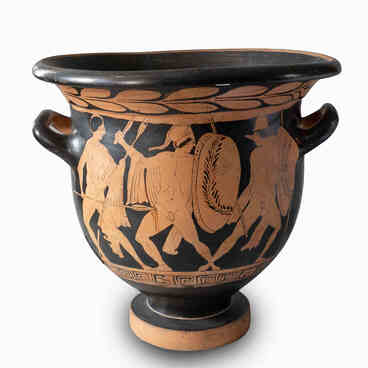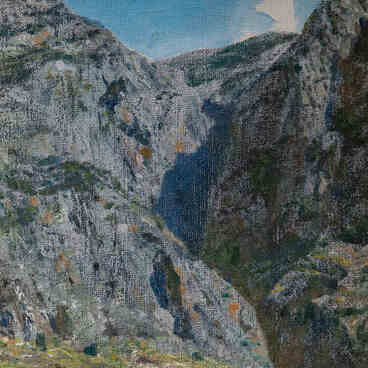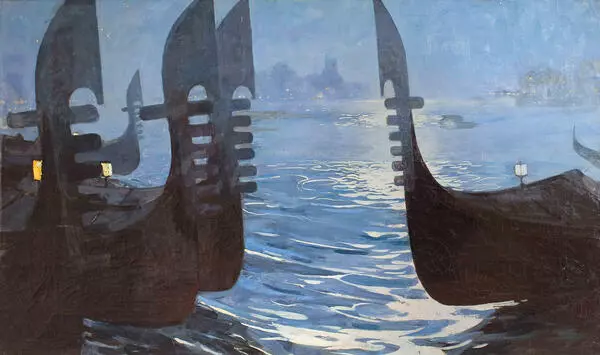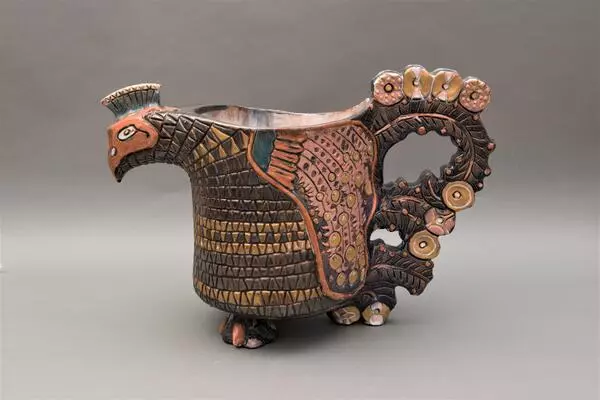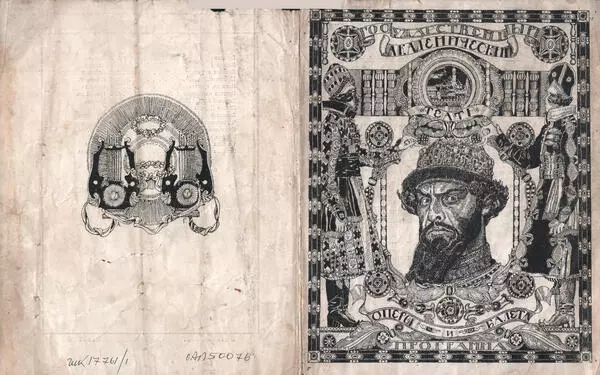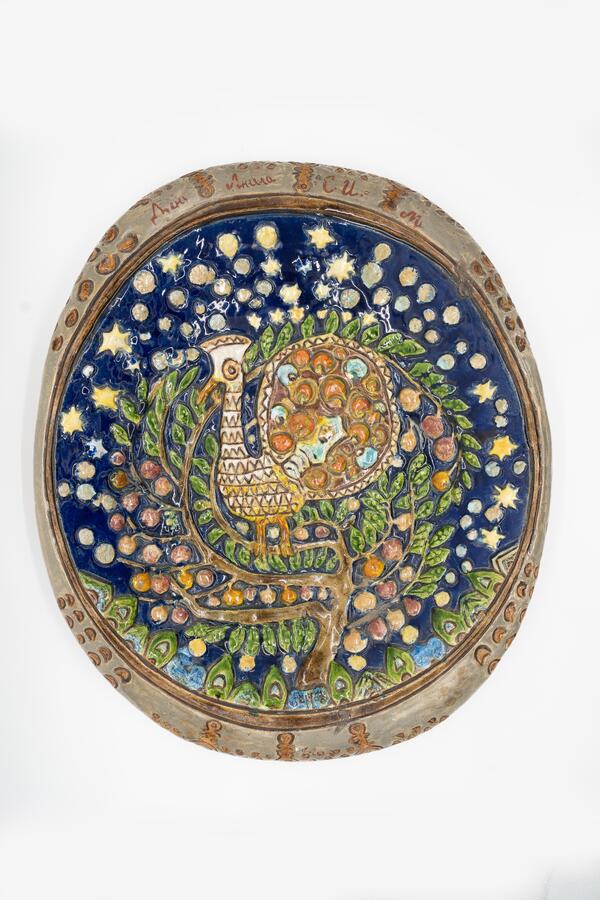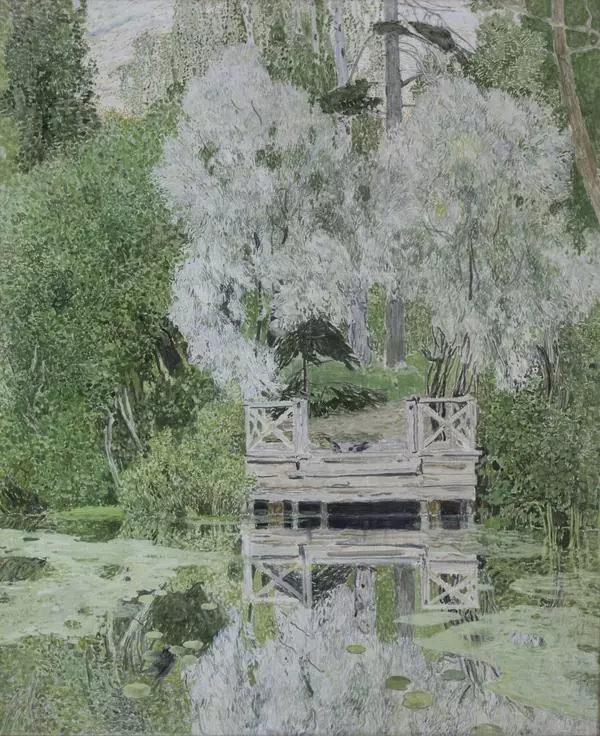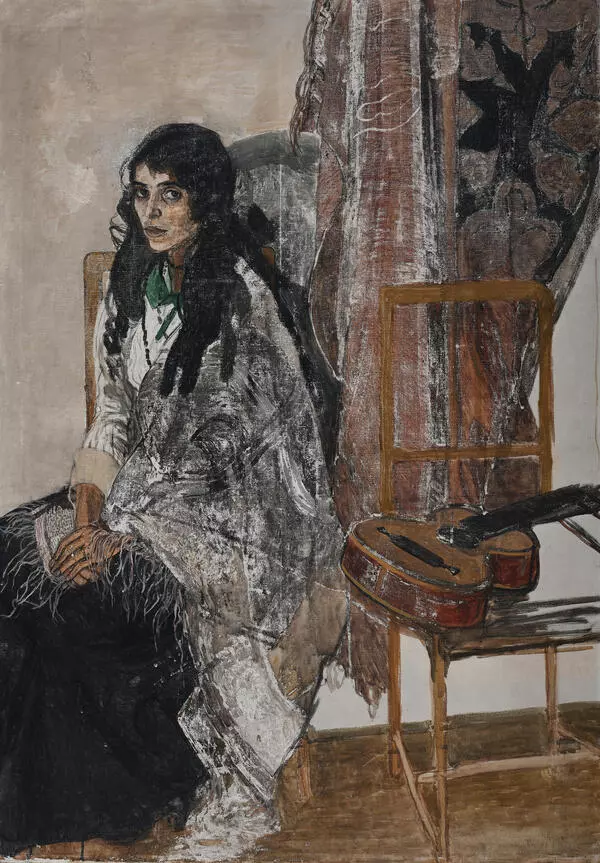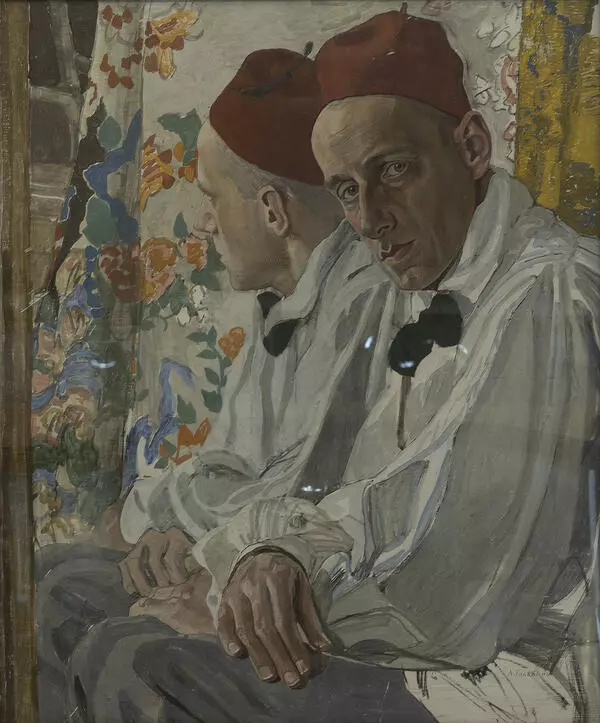Throughout his life, Nikolai Semyonovich Golovanov admired the outstanding composer Alexander Nikolayevich Scriabin. “Portrait of Alexander Nikolayevich Scriabin” was created by the artist Alexander Golovin — one of the most prominent representatives of Russian Symbolism and Art Nouveau and an active member of the “Mir iskusstva” art movement, whose works were greatly appreciated by Golovanov.
Nikolai Golovanov’s keen interest and love for the stage and theater brought him closer to Alexander Golovin and his paintings. Theater welcomed Golovin as an already experienced and versatile artist. Even before he started working in theater, Golovin proved himself as a talented landscape painter, portraitist, and muralist. Theater played an important role in bringing the artist’s painting up to date. Golovin’s pictures, much like Scriabin’s music, are synthetic: he matched the era which celebrated the synthesis of the arts.
Alexander Nikolayevich Scriabin was an outstanding composer and pianist. It was Scriabin who started using sound-color synesthesia concept in music. Among the composer’s most striking works are “The Poem of Ecstasy” and “Prometheus: The Poem of Fire”. The performance of the “Poem of Fire” required colored lighting: the melodies were supposed to be accompanied by successive color waves indicated in the score. However, due to the lack of special equipment, the premiere took place without using the light score. The composer interpreted the poem as a conflict between an individual and the entire universe. The creative task of Alexander Scriabin was to envision another world, where the spirit and matter merge, bringing about a new universe. The composer had an idea to create the performance called “Mysterium”, which would fuse various types of art, including music, dance, painting, and architecture. This unusual show was supposed to be the culmination on the way to a perfect new world. Sadly, it was not in the cards.
Nikolai Golovanov conducted Alexander Scriabin’s works. The conductor’s concert and studio repertoire included such works as “The Poem of Ecstasy”, “The Poem of Fire”, the tone poem “Dreams” and others. Nikolai Golovanov was especially pleased to have the portrait of Scriabin in his collection.
Nikolai Golovanov’s keen interest and love for the stage and theater brought him closer to Alexander Golovin and his paintings. Theater welcomed Golovin as an already experienced and versatile artist. Even before he started working in theater, Golovin proved himself as a talented landscape painter, portraitist, and muralist. Theater played an important role in bringing the artist’s painting up to date. Golovin’s pictures, much like Scriabin’s music, are synthetic: he matched the era which celebrated the synthesis of the arts.
Alexander Nikolayevich Scriabin was an outstanding composer and pianist. It was Scriabin who started using sound-color synesthesia concept in music. Among the composer’s most striking works are “The Poem of Ecstasy” and “Prometheus: The Poem of Fire”. The performance of the “Poem of Fire” required colored lighting: the melodies were supposed to be accompanied by successive color waves indicated in the score. However, due to the lack of special equipment, the premiere took place without using the light score. The composer interpreted the poem as a conflict between an individual and the entire universe. The creative task of Alexander Scriabin was to envision another world, where the spirit and matter merge, bringing about a new universe. The composer had an idea to create the performance called “Mysterium”, which would fuse various types of art, including music, dance, painting, and architecture. This unusual show was supposed to be the culmination on the way to a perfect new world. Sadly, it was not in the cards.
Nikolai Golovanov conducted Alexander Scriabin’s works. The conductor’s concert and studio repertoire included such works as “The Poem of Ecstasy”, “The Poem of Fire”, the tone poem “Dreams” and others. Nikolai Golovanov was especially pleased to have the portrait of Scriabin in his collection.


